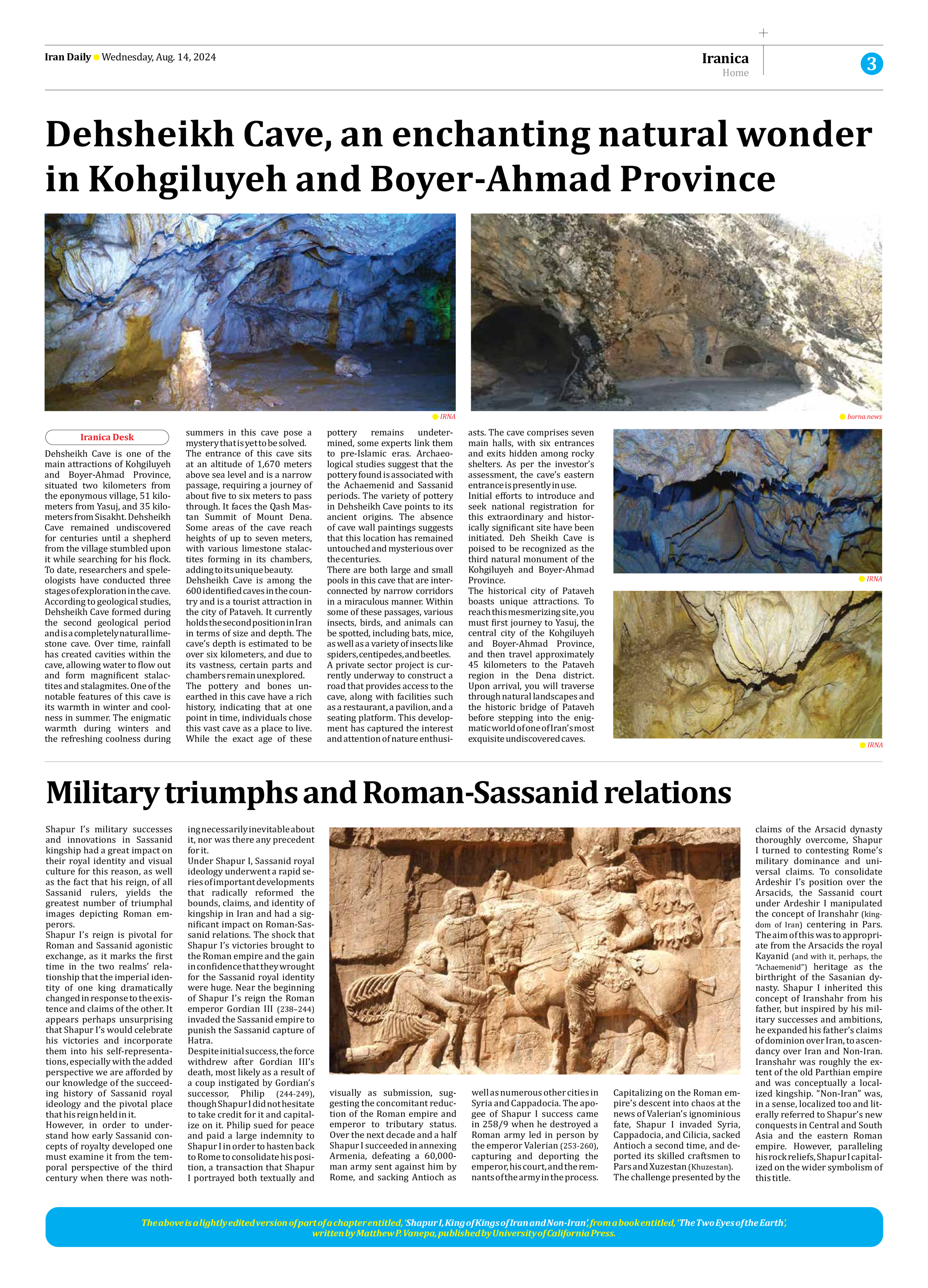
Dehsheikh Cave, an enchanting natural wonder in Kohgiluyeh and Boyer-Ahmad Province
Dehsheikh Cave is one of the main attractions of Kohgiluyeh and Boyer-Ahmad Province, situated two kilometers from the eponymous village, 51 kilometers from Yasuj, and 35 kilometers from Sisakht. Dehsheikh Cave remained undiscovered for centuries until a shepherd from the village stumbled upon it while searching for his flock. To date, researchers and speleologists have conducted three stages of exploration in the cave.
According to geological studies, Dehsheikh Cave formed during the second geological period and is a completely natural limestone cave. Over time, rainfall has created cavities within the cave, allowing water to flow out and form magnificent stalactites and stalagmites. One of the notable features of this cave is its warmth in winter and coolness in summer. The enigmatic warmth during winters and the refreshing coolness during summers in this cave pose a mystery that is yet to be solved.
The entrance of this cave sits at an altitude of 1,670 meters above sea level and is a narrow passage, requiring a journey of about five to six meters to pass through. It faces the Qash Mastan Summit of Mount Dena. Some areas of the cave reach heights of up to seven meters, with various limestone stalactites forming in its chambers, adding to its unique beauty.
Dehsheikh Cave is among the 600 identified caves in the country and is a tourist attraction in the city of Pataveh. It currently holds the second position in Iran in terms of size and depth. The cave’s depth is estimated to be over six kilometers, and due to its vastness, certain parts and chambers remain unexplored.
The pottery and bones unearthed in this cave have a rich history, indicating that at one point in time, individuals chose this vast cave as a place to live. While the exact age of these pottery remains undetermined, some experts link them to pre-Islamic eras. Archaeological studies suggest that the pottery found is associated with the Achaemenid and Sassanid periods. The variety of pottery in Dehsheikh Cave points to its ancient origins. The absence of cave wall paintings suggests that this location has remained untouched and mysterious over the centuries.
There are both large and small pools in this cave that are interconnected by narrow corridors in a miraculous manner. Within some of these passages, various insects, birds, and animals can be spotted, including bats, mice, as well as a variety of insects like spiders, centipedes, and beetles.
A private sector project is currently underway to construct a road that provides access to the cave, along with facilities such as a restaurant, a pavilion, and a seating platform. This development has captured the interest and attention of nature enthusiasts. The cave comprises seven main halls, with six entrances and exits hidden among rocky shelters. As per the investor’s assessment, the cave’s eastern entrance is presently in use.
Initial efforts to introduce and seek national registration for this extraordinary and historically significant site have been initiated. Deh Sheikh Cave is poised to be recognized as the third natural monument of the Kohgiluyeh and Boyer-Ahmad Province.
The historical city of Pataveh boasts unique attractions. To reach this mesmerizing site, you must first journey to Yasuj, the central city of the Kohgiluyeh and Boyer-Ahmad Province, and then travel approximately 45 kilometers to the Pataveh region in the Dena district. Upon arrival, you will traverse through natural landscapes and the historic bridge of Pataveh before stepping into the enigmatic world of one of Iran’s most exquisite undiscovered caves.







